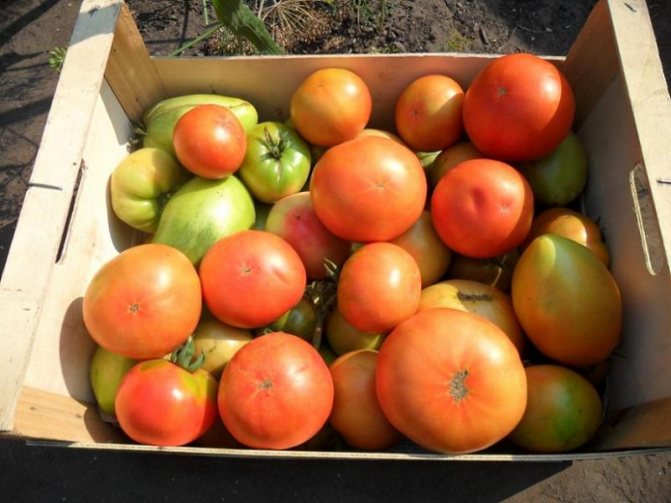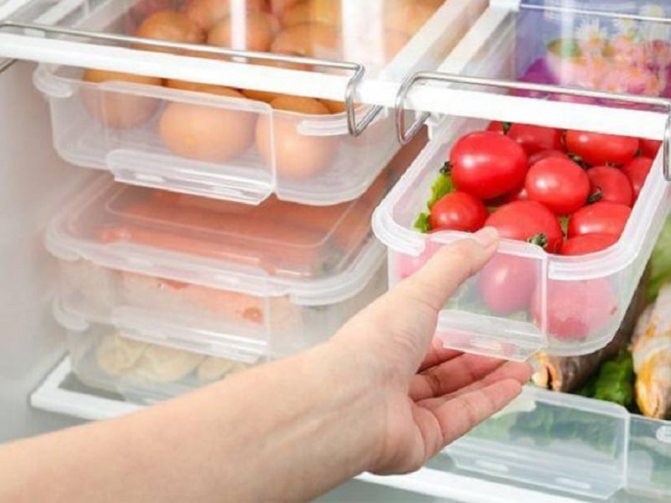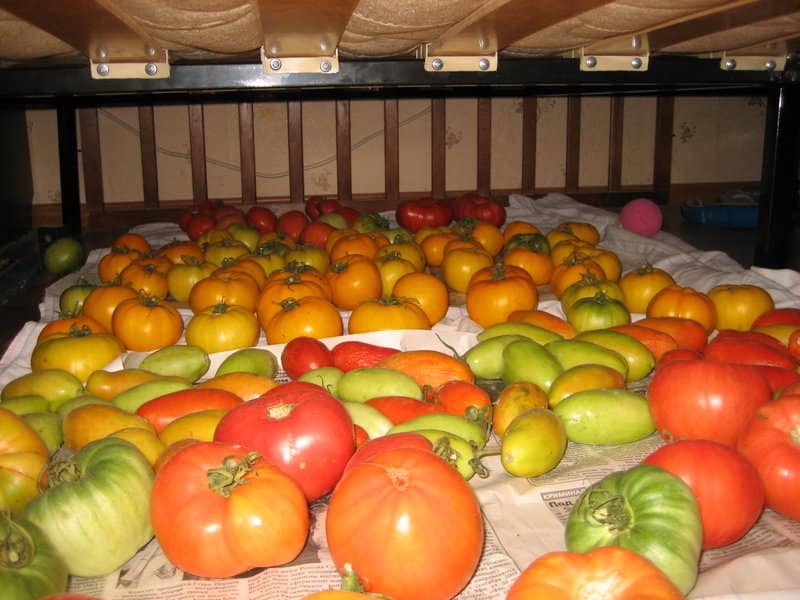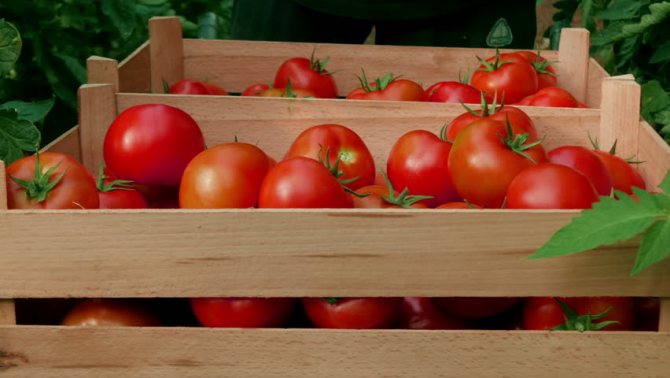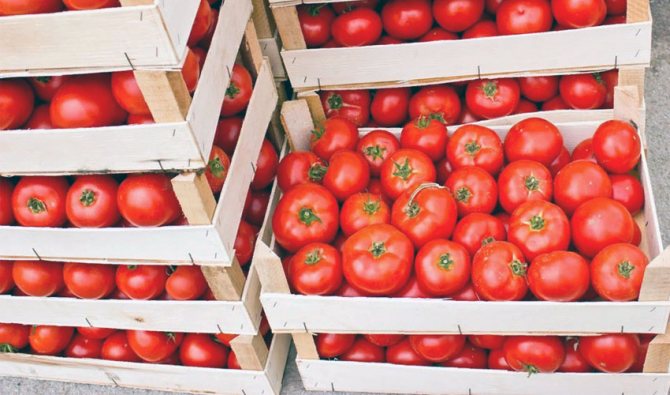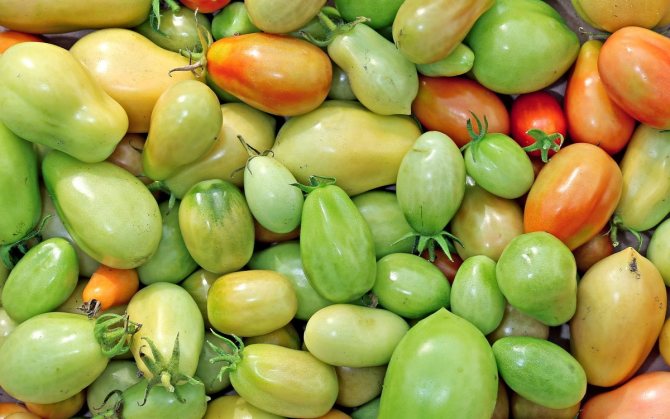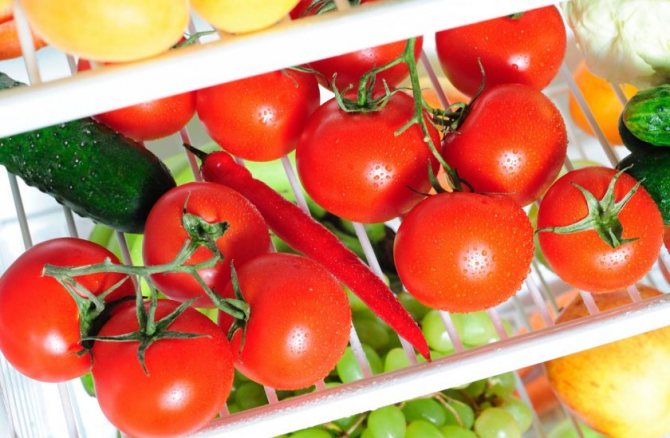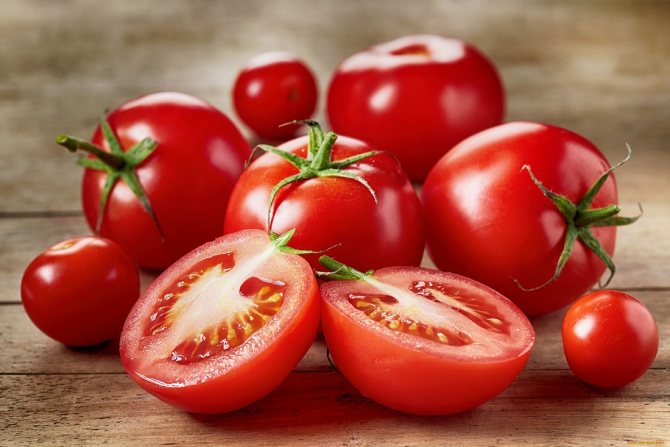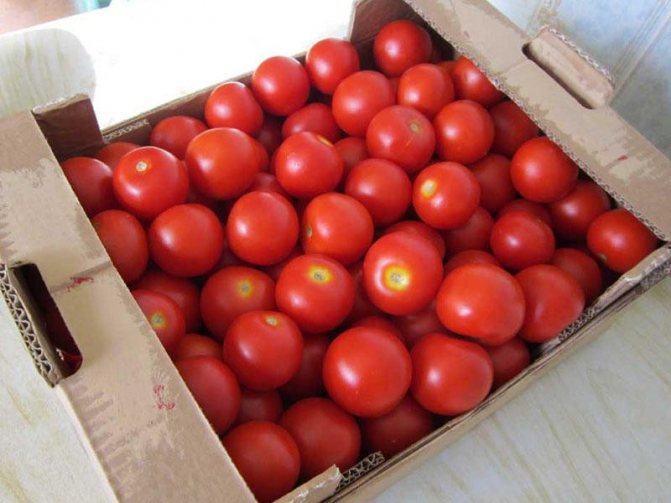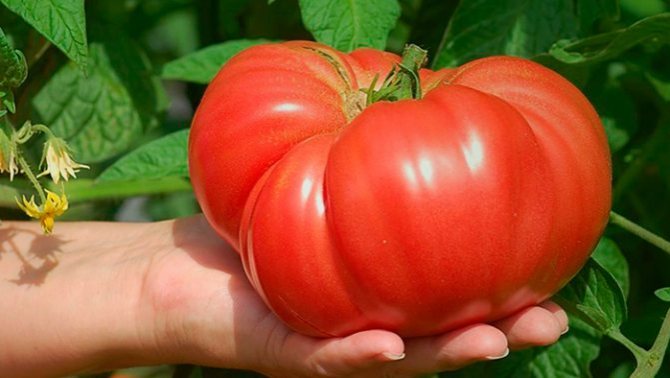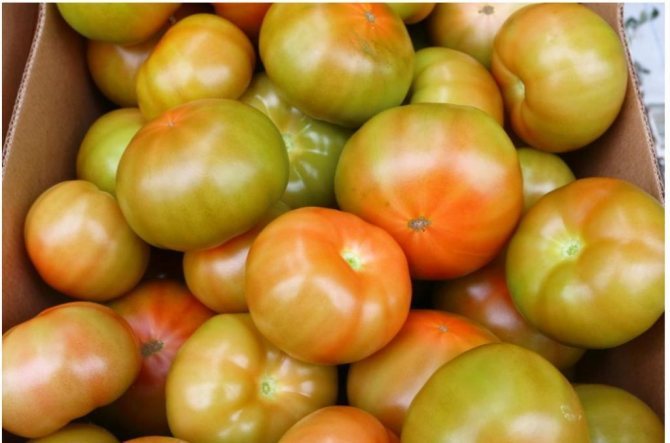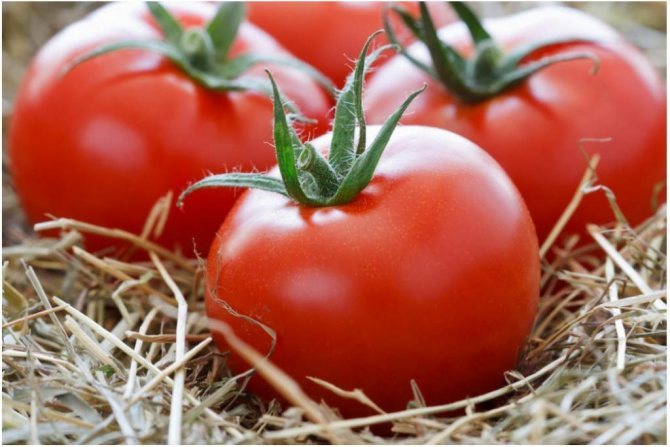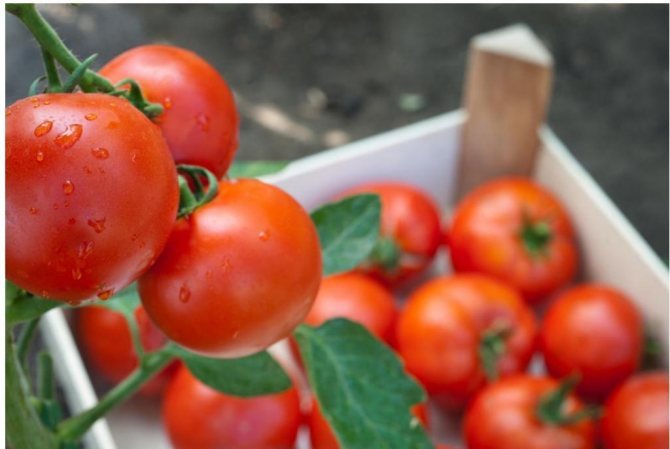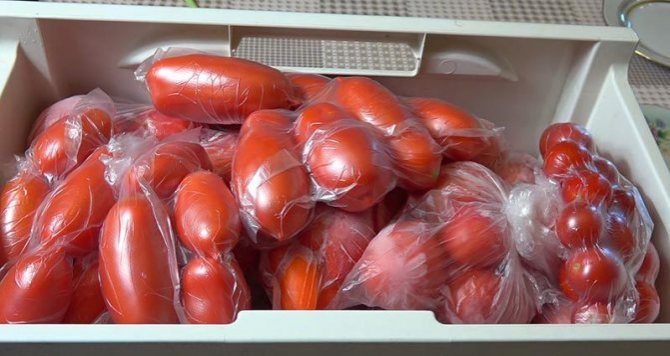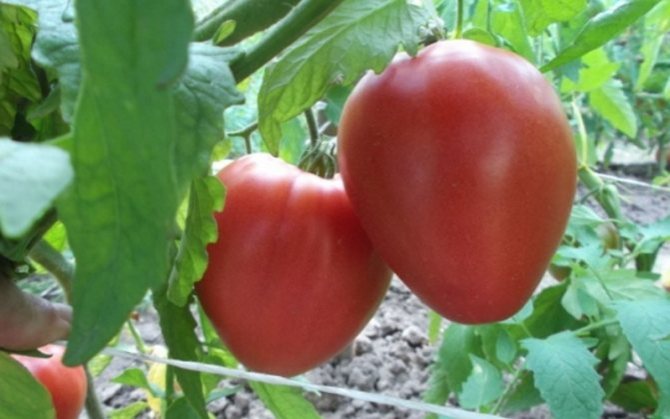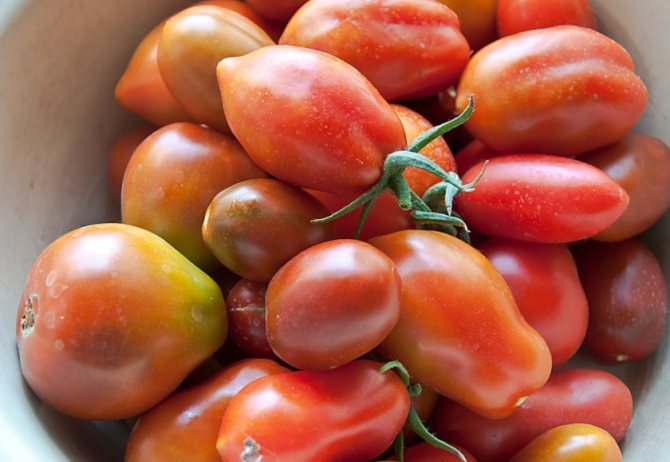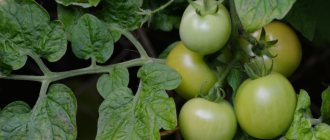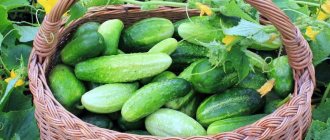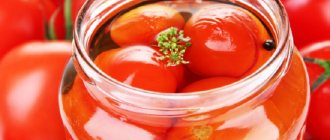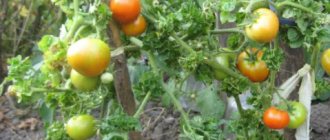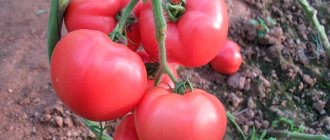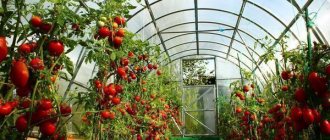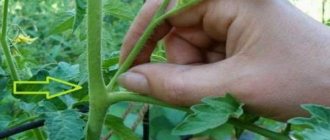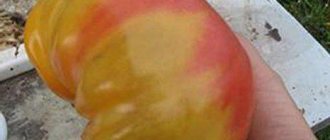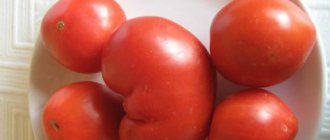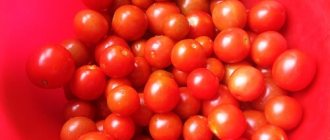Autumn came, and with it late blight and frost. It is dangerous to leave green tomatoes on the vine in such a situation, since illness and low temperatures can damage not only the stems of the plant, but also the unripe fruits. Harvesting early will help save tomatoes. Green vegetables can be used to make winter pickles or stored under artificial conditions until ripening. There are several ways to influence the ripening process of tomatoes. We will try to discuss the simplest and most accessible of them in more detail.
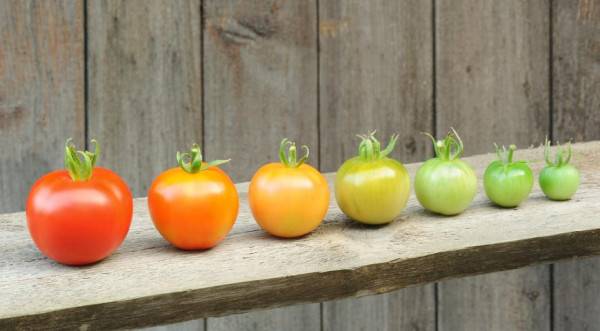
What tomatoes are subject to long-term storage
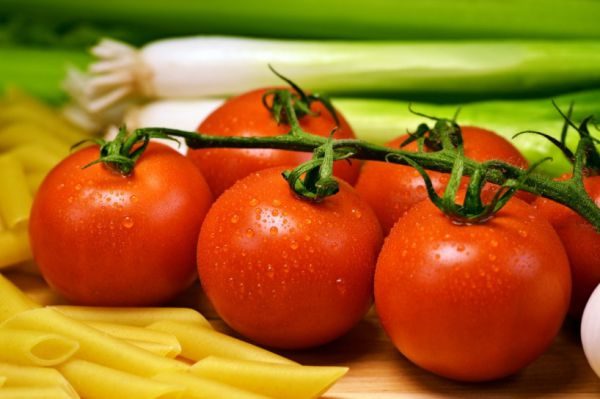

Successful storage of tomatoes in winter depends on the variety and conditions of the crop.
To keep tomatoes fresh for a long time, follow these simple guidelines:
- Late varieties are more preferable for future blanks. Harvesting of this variety of tomatoes is carried out before the beginning of the period of low temperatures and frost. They are poorly exposed to diseases, tolerate transportation well.
- It is important to choose tomatoes with a strong skin, dense pulp, and a low percentage of juice.
- Vegetables with high sugar levels do not lose their flavor over a long period of time.
- For bookmarking for the winter, you should use tomatoes of medium and small size, the diameter of which does not exceed 5 cm, and the weight is not more than 70 g. Large tomatoes are suitable for short-term ripening. Small specimens are successfully saved over a long period of time, but they lose their taste and useful properties.
- Regardless of the variety, greenhouse tomatoes retain their taste worse than vegetables from the garden.
- Preference should be given to subspecies intended for cultivation in a specific climatic zone.
- It is recommended to keep the different varieties separately due to the different ripening periods.
- Do not store fruits with any mechanical damage, cracks, stains, signs of rot.
Tips for storing tomatoes
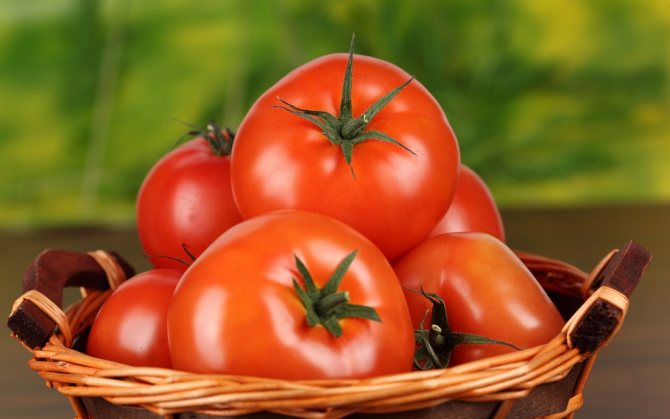

The main thing in the long-term storage of tomatoes is to choose fruits that can lie for a long time. Therefore, it is not recommended to buy tomatoes that you plan to send for winter maturation in supermarkets. On the shelves of such stores, for the most part, there are those tomatoes that were grown in a greenhouse or brought from abroad, which negatively affects their shelf life. It is better to buy tomatoes from the market or grow them yourself. Other tips to help improve keeping quality are as follows:
- Tomatoes are always placed with the stalk up, since their skin in this place is the most delicate and can crack under the weight of the fruit.
- It is undesirable to make more than 2 layers of tomatoes in a box, since under the weight of the upper ones, the lower row of fruits will be crushed and begin to rot.
- If the damaged tomato is not removed from the rest in time, other fruits will start to deteriorate.
- It is impossible to allow contact with direct rays of the sun - tomatoes begin to ripen rapidly and, therefore, will soon deteriorate.
The duration of storage of tomatoes largely depends on their varietal affiliation. Good keeping quality in medium-ripe and late-ripening varieties of tomatoes. Also, the shelf life of fruits is also influenced by the conditions of their storage - the temperature values in the room or place of storage must be low, and the humidity indicators are not higher than 80%.Tomatoes are sent for winter maturation without visible damage to the skin, otherwise they cannot be fresh for a long time and will quickly lose their taste, aroma and presentation.
Which varieties are stored the longest
Most subspecies of tomatoes for long-term savings are not affected by negative environmental factors. They can withstand temperature extremes and changes in moisture levels.
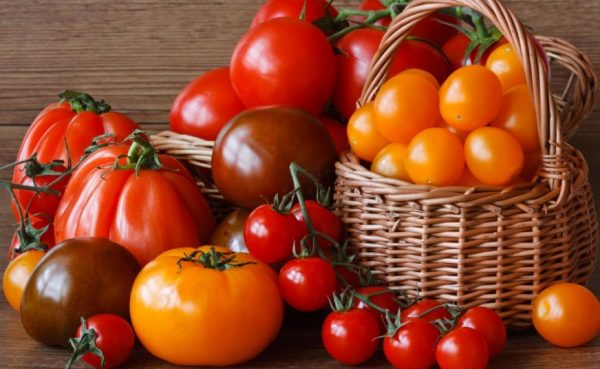

It is important to maintain the temperature regime within + 10 ... + 15 degrees Celsius
Their flesh is dense, elastic. Tomatoes do not crack, retaining an appetizing appearance and taste for 2-8 months.
The most mellow varieties:
| Variety | Duration of lying (in months) |
| Giraffe | 8 |
| Crunch F1 | Up to 5 |
| Khutorskoy | 4-5 |
| Slowback F1 | About 4 |
| New Year | 3-5 |
| Cherry red | 3 |
| Cherry Lisa | 2,5 |
| Cherry Lycopa | 2,5 |
| Intuition | 3 |
| Instinct | 3 |
| Reflex | 3 |
| Monica | 3 |
| Master | 3 |
| Diamond | 3 |
| Masterpiece 1 | Till March |
| Pharaoh | More than 1 |
| Tamerlane | More than 1 |
| Cartouche | 2,5 |
| Volgograd | More than 3 |
| Viscount | 3 |
| Trust | 3 |
| Ressento | 3 |
| Diamond | 3-4 |
| New masterpiece | More than 3 |
| Long Keeper | Till March |
| Red Stone | 3 |
| Dominator F1 | More than 2 |
| Radical F1 | More than 2 |
| Akdeniz F1 | More than 2 |
| Lazarus F1 | More than 2 |
| Dobrun F1 | More than 2 |
| Albashi F1 | More than 2 |
| Bonus | 3 |
| Snowfall | Up to 4 |
The mildest varieties
- Giraffe. In the south, it grows in open ground, and in the northern regions it is better to grow in a greenhouse. The variety is classified as indeterminate. The height of the bush can be up to two meters. Stitching and garter required. It is best to form plants into one stem. The shape of the vegetable is round, and the weight ranges from 50 to 100 g. Ripe tomatoes have a pronounced orange hue (they are closer to persimmon in color), and the pulp, on the contrary, is red. They lie perfectly until January.
- Catherine. Indeterminate hybrid for greenhouse cultivation. The bushes are quite tall, the maximum weight of one fruit is 140 g. The skin does not crack, it can be transported. The variety has a good yield (over 8.5 kg / m2). It retains its freshness and taste without problems for 1.5 months.
- Stone Flower. It grows with standard bushes (up to 50 cm in height), you do not need to pinch. Tomatoes are quite large, flattened. The weight of one fruit is 130 - 250 g. This variety gives an excellent harvest, which can be maintained for a long time without losses.
- Long Keeper. The bushes are medium-sized (up to 1.5 m), the maximum weight of one tomato is 150 g. The variety has a high and stable yield (from 2 to 4 kg per bush). They are practically not affected by the tobacco mosaic virus. Special feature: The fruit never ripens on the bush. They are always shot in beige and green. Then they turn yellow, and over time they turn pink (the pulp is brighter and more saturated). It is possible to preserve the freshness of vegetables until mid-March.
- Snowfall. Hybrid with late ripening. Indeterminant. The bushes are prone to strong branching, their height is no more than 1.2 m. They must be tied to a support and stepson. The fruits are rounded, slightly ribbed near the stalk. They do not differ in large sizes (they weigh only 60 - 75 g each). With proper watering and feeding, the variety gives more than 4 kg per bush.
- Empire. Indeterminate variety bred for greenhouses. The green mass reaches a height of up to 2 m. Tomatoes are shaped like cream (their weight is from 90 to 140 g). A very productive hybrid. Up to 9 kg of vegetables are removed from one m2. Demonstrates good disease resistance and is kept fresh for one and a half months.
- New Year. Refers to indeterminate varieties. Fruits are slightly flat, weighing up to 200 g. The branchiness of the bushes is average, the garter and pinching are required. Tomatoes keep fresh for up to 5 months. One plant gives up to 3.5 kg of yield.
- A lazy man. Typical determinant. Deep red fruits (up to 160 g). Very meaty and tasty. It can grow outdoors or under a film. With proper care and prevention of diseases from the square. meter planting can be removed from 8 to 9 kg of tomatoes.
- Ozaltin. Indeterminate variety.The fruits are tied on the hands. They are distinguished by a very dense skin, fleshy and thick-walled. The fruits harvested in August will easily reach the New Year's table. Productivity - 5 kg per bush.
- Lazy. Refers to determinant varieties. Squat bushes with spreading branches (no more than 1 m in height). Fruit size is medium (100 - 120 g). They retain their taste and presentation until January - February.
Processing methods
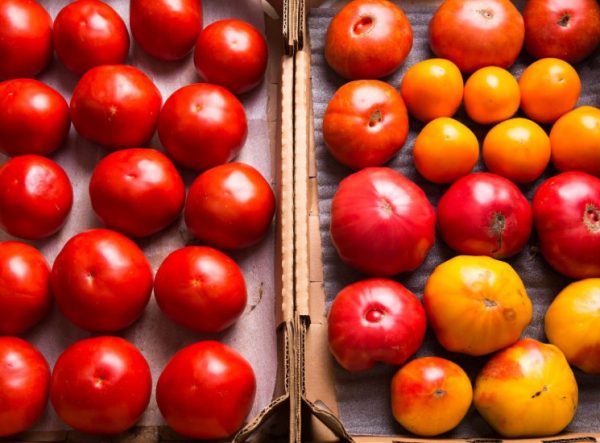

Suitable for ripening tomatoes of varying degrees of ripeness without damage
Regardless of the method and place of storage, the fruits must undergo preliminary processing and preparation:
- Sorting. Tomatoes must be sorted by size and ripeness. This is due to the fact that the ripening of large fruits occurs earlier than small and medium ones. Ripe and green vegetables require different temperature savings.
- Culling. Each tomato must be inspected and damaged specimens with signs of rot must be removed.
- Tomato picking time. It is necessary to follow the weather forecast and have time to harvest the crop before the onset of the first frost. If the plant has survived sub-zero temperatures, then the tomatoes are not subject to long-term savings.
- Harvesting rules:
- Vegetables are cut off along with the stalk. This will extend the shelf life.
- A sunny day is suitable for removing a tomato. Plant watering stops 14 days before the start of the harvest. If it rains, you can pick vegetables no earlier than after 7 days.
- Processing before storage:
- You cannot wash tomatoes. This will facilitate the removal of the protective layer from their surface and the beginning of the decay process.
- Before laying, it is recommended to carry out processing of stocks using boric acid (0.3%) or a solution of potassium permanganate of low concentration.
How to store green tomatoes so they turn red and ripe at home
There are certain rules to follow for ripening tomatoes at home. Let's take a closer look at ways to accelerate ripening on branches, in stacks, etc.
How to accelerate ripening
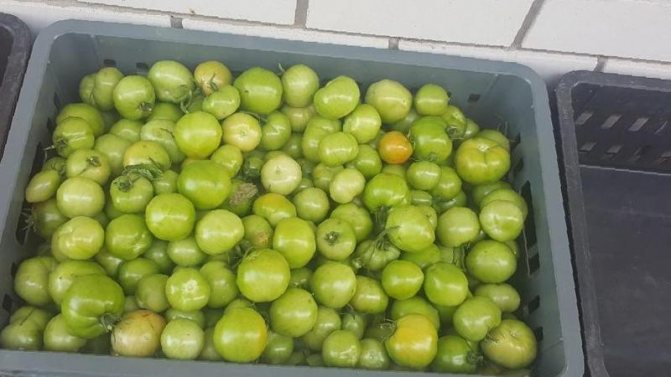

These tricks will speed up the ripening of plucked tomatoes:
- put tomatoes in paper bags and put a banana between them, it will release a special enzyme that will speed up the growth process;
- fill the box with fruits with sawdust;
- so that during storage the fungus does not hit the fruits, they are treated with alcohol;
- put boxes of tomatoes in a dark cellar for several hours, then take them out and put them in a warm room, so they turn red faster;
- some summer residents put tomatoes in felt boots;
- put a few already ripe in a box with unripe tomatoes.
Ways to accelerate the ripening of tomatoes on branches
For this storage method, it is necessary to dig up all the bushes on which there are unripe tomatoes. This should be done as carefully as possible without damaging the root system. After that, hang the bushes in a dark, dry room with the roots up. The air temperature in the room should be at least + 20 ... + 23 ° C, otherwise the vegetables will wither.
Maturing in stacks
This method is suitable if there are a lot of unripe tomatoes left on the bushes. The bushes are cut at the very base, stacked in stacks in a warm and dark room so that the tops are in the middle. Then the stacks are insulated with a cloth or bundles of straw.
Ripening
Suitable for ripening are tomatoes of varying degrees of ripeness without damage. This process will allow you to extend the period of eating fresh tomatoes by another couple of months.
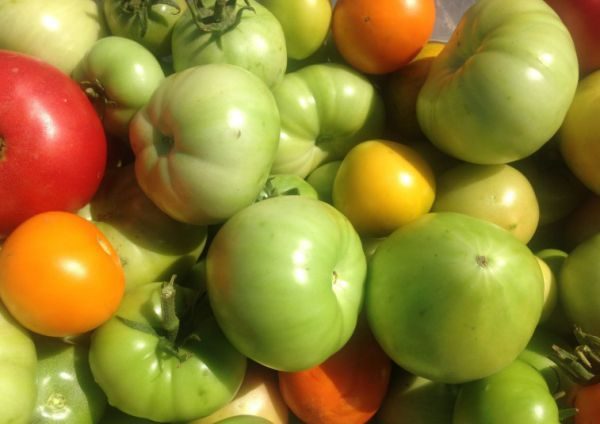

Adjusting the temperature in the storage will speed up or slow down the ripening of vegetables
The ripening rate and shelf life directly depend on the temperature regime in the place of storage. Adjusting the temperature in the storage will speed up or slow down the ripening of vegetables.
Long ripening
Long-term ripening of tomatoes occurs at + 10 ... + 12 degrees. The fruits should be stacked in one layer.
It is important to organize the optimal level of humidity in the environment. The indicator should be within 85%. A higher level will speed up the rotting processes of vegetables. Lack of moisture leads to flabbiness and dryness of the tomato.
If it is important to preserve the fruits as long as possible, then the harvest is inspected daily.
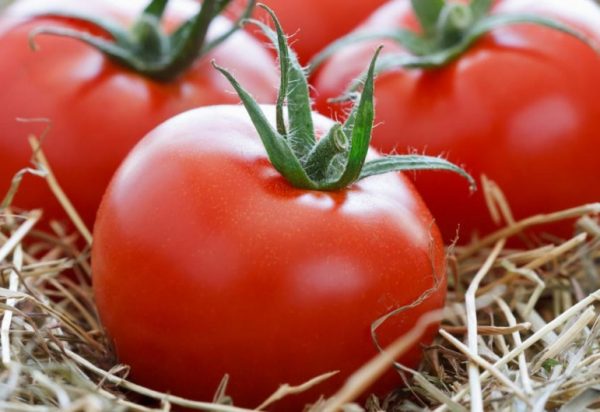

The ripening process can be significantly accelerated
All tomatoes that begin to blush are placed in another container, since these vegetables release a significant amount of ethylene, which will accelerate the ripening of other specimens.
The disadvantage of this storage method is the appearance over time of a large number of spoiled, rotten tomatoes.
Rapid ripening
Rapid ripening of vegetables is carried out in a well-ventilated storage without signs of dampness at a temperature range of + 20 ... + 24 degrees.
Tomatoes sorted by size are laid out in wooden or plastic boxes in several layers. The peduncle on each fruit should be placed at the top.
Top vegetables should be covered with newspapers or towels to avoid exposure to sunlight.
The ripening process can be significantly accelerated... For this purpose, hay is laid between the tomatoes. In the boxes you can put several red fruits, ripe apples, pears, bananas. In such conditions, the process of full maturation will take no more than 8 days.
Finding stocks at a temperature of about +30 degrees contributes to an even faster ripening. The disadvantage of this method is the loss of elasticity of tomatoes. They become very soft, and yellow spots appear in the area of the stalk.
Ripening on bushes
There are several ways to ripen green fruits on dug plants.
At the first, the tomatoes are dug up, after which each bush is suspended in a dry room with sufficient ventilation with the root up.
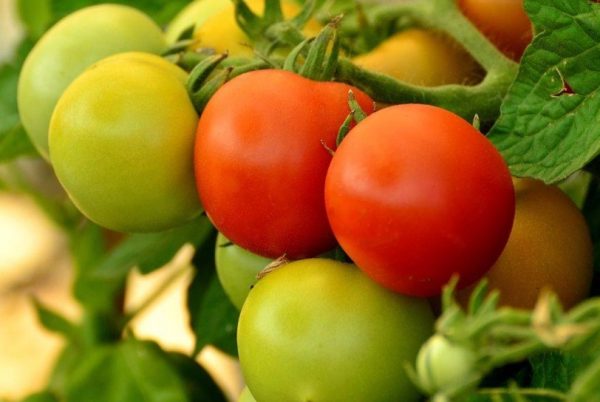

There are several ways to ripen green fruits on dug plants.
The second method involves digging up the plants by the roots and placing them in a wooden box on a veranda or greenhouse.
Tips & Tricks
It is not recommended to eat unripe tomatoes, as they contain specific enzymes. These substances, entering the human body, can cause poisoning. However, there are many canning recipes that use green tomatoes. In pickles, toxic compounds are neutralized.
If you want to have ripe tomatoes all year round, you can start growing tomatoes at home. Hybrids that do not require intensive care are suitable for this. They can be grown in small pots.
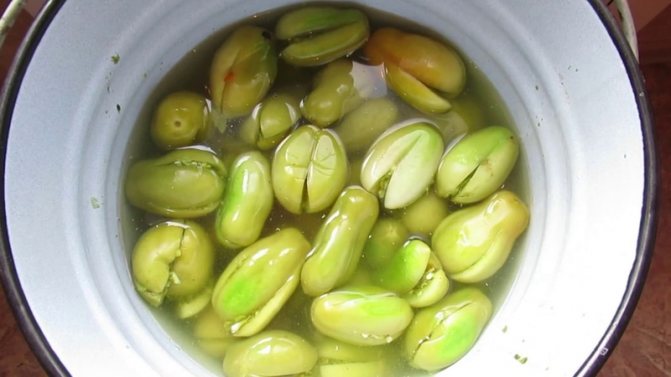

Conditions and storage location
To preserve the taste and aroma of tomatoes, it is important to protect the crop from changes in temperature and humidity. The optimal indicators are a temperature of about +10 degrees, humidity in the range of 80-95%.
It is important to take into account that fruits of different ripeness require different storage conditions:
| Degree of maturity | Saving temperature (in degrees Celsius) |
| Ripe tomatoes of all colors | +1…+2 |
| Brown | +4…+5 |
| Solid pink, red | +8…+10 |
| Green | +12…+21 |
It is highly undesirable to store pink and green tomatoes at temperatures below +5 degrees. This will cause the fruit to lose its rich color and the ability to ripen.
The store must be ventilated periodically. Also of great importance is the place chosen for the conservation of stocks. The room must be dark.
This can be a cellar, a cool pantry, a veranda, a garage, an insulated balcony, a vestibule, a section for storing vegetables in the refrigerator, a place under a bed or bathroom.
In a cellar or basement
To save tomatoes, the storage must be prepared... It needs to be well dried, insulated, cleaned, and removed from plant residues from last year's harvest.
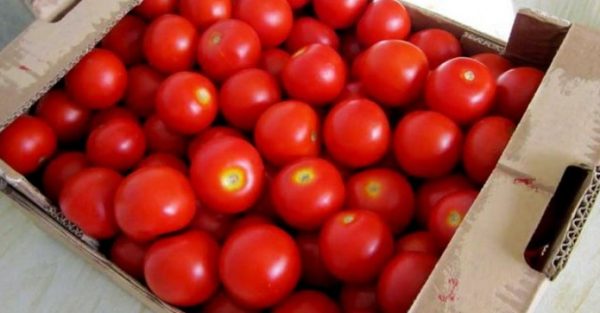

When maintaining the temperature regime within + 10 ... + 11 degrees and moisture concentration within 80-90%, the reserves are stored for 3 months
As a container, boxes made of wood or plastic are used, placed on racks or shelves. The aisles are covered with dry sawdust or onion husks.
You can put sheets of paper between the layers. This will help absorb excess moisture. The ideal option would be to wrap each fruit in a thin paper wrap. The crop is laid in no more than three layers.
The cellar or basement should be regularly ventilated. In a closed room and musty air, food will begin to deteriorate within a week.
If the temperature regime is maintained within + 10 ... + 11 degrees and the moisture concentration is within 80-90%, the reserves are stored for 3 months.
Care must be taken to ensure that the temperature does not drop below zero. If the tomatoes have become wrinkled, then this is a sign of dry air. Mold growth indicates that the humidity level is too high.
The harvest is inspected once a week. All spoiled vegetables should be removed without regret. This will help avoid contamination of the rest of the stock.
In the apartment
It is possible to save fresh tomatoes in an apartment... For these purposes, a refrigerator, balcony, pantry are suitable. You can use the space under the bed or bath.
The storage temperature is + 10 ... + 21 degrees. Basins, baskets, boxes are used as containers. Straw and burlap are placed on the bottom. The fruit is arranged with the stalk up. Cover vegetables with a dark cloth.
In a refrigerator
The storage of fruits in the refrigerator is carried out in a special compartment for vegetables. It is advisable that the air temperature does not fall below +8 degrees.
Each layer is lined with sheets of paper. An even better option is to wrap each vegetable in tissue paper. The fruits will not touch each other and will last longer.
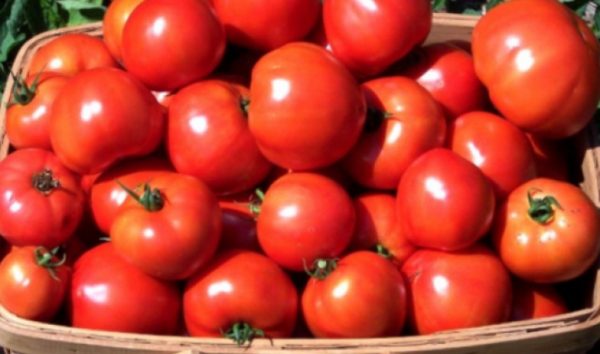

Low temperature and constant weathering do not contribute to long-term storage of fruits in the refrigerator
Cellophane bags are unsuitable for these purposes. They contribute to the formation of a large amount of condensation and do not interfere with the penetration of air, which will quickly lead to the onset of decay processes.
Low temperature and constant weathering do not contribute to long-term storage of fruits in the refrigerator... The storage period is no more than 7 days. Some specimens do not lose their taste for up to 2 weeks.
On the balcony
Most apartment owners insulate their loggias and balconies, which allows the room to be used as a food storage, provided that the winter is warm and the temperature on the balcony is within + 5 ... + 12 degrees.
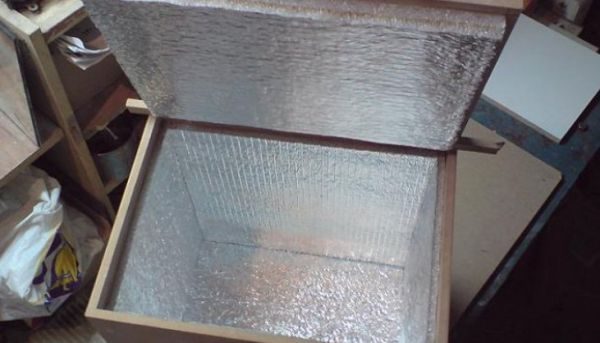

Most apartment owners insulate their loggias and balconies, which allows the room to be used as storage
Vegetables must be placed in clean boxes. The bottom is lined with cloth or paper. Gaskets are made of the same materials between the layers. To save space, containers are stacked one on top of the other.
The top drawer should be covered with a cloth to keep out the sun's rays. However, the shelter should not obstruct the ingress of air. The balcony must be regularly ventilated and monitored for temperature fluctuations.
Harvesting fresh tomatoes in the winter
Before you ask yourself the question of keeping fresh tomatoes for a long period of time, it is worthwhile to determine if the tomato variety is suitable for storage. Unfortunately, not every tomato is able to please the hostess with their condition the next year after the harvest. For long-term storage, you need to choose late varieties of tomatoes, they are the most mature.If the product for storage is bought in the season of low prices, then in this case, too, buy the late-ripening representatives of the Solanaceae.
How to save tomatoes
As a container for saving a tomato, boxes, cans, straw, a refrigerator are used.
In boxes
For storing vegetables, small plastic or wooden slatted boxes with a lattice bottom are used. The container must be thoroughly washed and dried. The paper is placed on the bottom.
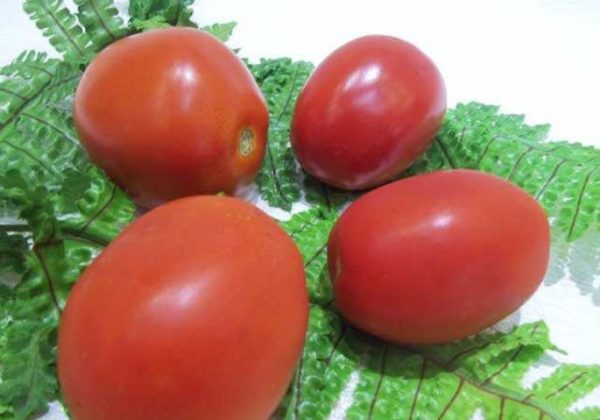

As a container for saving a tomato, boxes, cans, straw, a refrigerator are used
The boxes must be wiped on all sides with alcohol. This will prevent the appearance of rot and harmful microorganisms.
Healthy and strong vegetables for storage should be dry, without signs of damage or rot. Tomatoes must be sorted according to size and ripeness.
They are laid in 2-3 layers and covered with dry wood peat, sawdust, straw, hay, onion husks.
In the straw
Using straw keeps tomatoes fresh for 3 months. It prevents the appearance of fungus and the development of bacterial diseases.
The fruits are placed in boxes, previously wrapped in dark paper. Tomatoes are sprinkled with straw. The container must be placed in a place without access to sunlight at a temperature of + 8 ... + 10 degrees. To speed up the ripening process, stocks are transferred for several days to a well-lit place.
In banks
Jar storage is a convenient, quick and practical way to keep tomatoes fresh and flavorful. There are several ways to preserve the crop using cans.
Method 1
Banks are thoroughly rinsed using baking soda. The container should be allowed to dry well. To do this, you can hold glass containers at a safe distance above the gas stove.
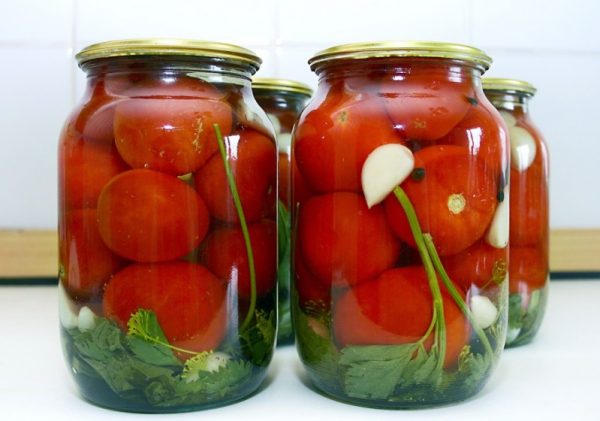

The fruits are washed with the addition of vinegar
The fruits are washed with the addition of vinegar. The vegetables are placed in a jar. The container must be tied on top with gauze, which must first be boiled in a strong saline solution. The method allows you to keep the freshness of tomatoes for 3 months.
Method 2
Glass containers must be sterilized and the fruits must be laid. Pour tomatoes with brine, which includes 8 parts of water, 1 part of vinegar and the same amount of salt. The containers must be sealed with lids and sent for safekeeping in a dark cool storage.
Method 3
Vegetables are placed in a carefully washed and dried glass container and filled with sunflower oil so that it covers the vegetables by 1 cm.
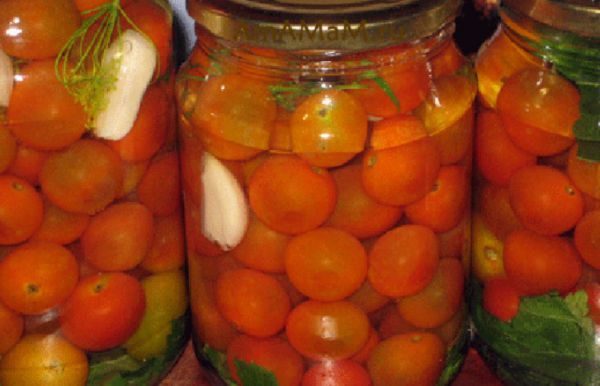

Storing tomatoes in a jar
Closed with lids and placed in a cool storage area. In such conditions, tomatoes do not lose their taste for 4 months.
In a refrigerator
The best place for storing fruit in the refrigerator is in a special vegetable compartment called the "freshness zone". This zone provides ideal conditions for the long-term conservation of vegetables, including tomatoes.
Tomatoes are stacked in a department in no more than 2 layers to avoid damage to the lower fruits.
Mustard method
Carefully selected firm tomatoes should be washed and dried in the fresh air. Sterilize three-liter glass containers and pour 40 g of mustard powder on the bottom.
When laying fruits in a container, you need to sprinkle each layer with mustard a little. Tomatoes should be placed loosely, at a short distance from each other.
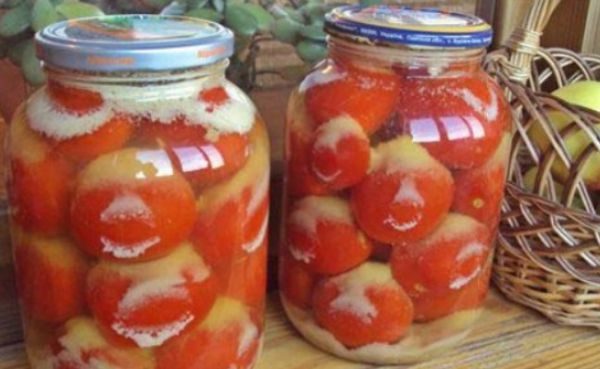

Mustard method
After filling the container to the top, add 1 more tablespoon of mustard powder. Roll up the jar using a metal lid. A three-liter jar should take about 6 tablespoons of powder.
Alcohol method
This method is best for milk-ripened fruits. They are thoroughly washed and dried. Tomatoes should be loosely packed in a pre-sterilized glass jar.
After filling the container, pour the fruits with 3 tablespoons of 96% alcohol and cover with a nylon cloth.
The jar needs to be twisted a little in your hands so that the alcohol moistens all the fruits. A wick is lowered inside the container and ignited from the outside. At the moment when the alcohol starts to burn, the container is sealed using a metal lid.
The way in the newspaper
Newspaper preservation is suitable for late varieties of tomatoes, green specimens or those that have reached milk maturity.
Each fruit is carefully wrapped in newsprint and carefully placed with the stalks upward in a wooden box with a lattice bottom or a cardboard box with holes so that the air can circulate calmly.
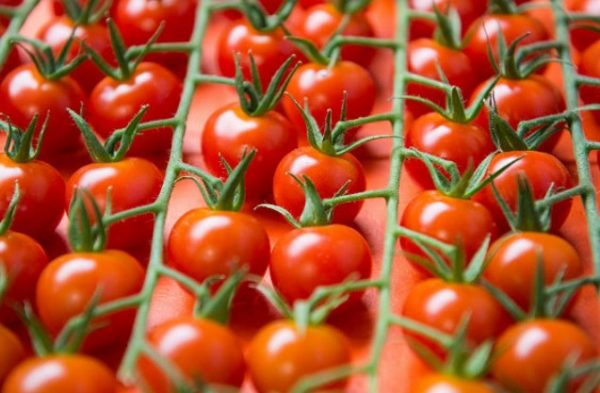

Each fruit is carefully wrapped in newsprint
The bottom of the container is lined with dry straw. Each layer is also sprinkled with this material. They store the crop in a cellar or basement.
Before eating tomatoes, you need to free them from paper and leave them in the light for 1-2 days. Tomatoes will quickly turn reddish when exposed to light.
Sawdust method
Storing in sawdust is the best option for tomatoes that are not yet fully ripe. Wooden boxes are used as containers. When stacking fruits, it is important to ensure that they do not touch each other.
The stalk of the tomato should be facing up. Each layer is sprinkled with sawdust. This material perfectly absorbs moisture and will help to avoid the appearance of rot and spoilage of the product.
The place of storage should be protected from direct sunlight. The optimum temperature is within +10 degrees. The boxes are placed in the cellar, basement, balcony (if it is not located on the south side of the house).
Way in paper
Saving tomato in paper is suitable for green and pink fruits. They are thoroughly washed and laid on a towel to dry well. You don't need to wipe the vegetables.
The moisture should dry on its own. Do not expose to sunlight during the drying process.
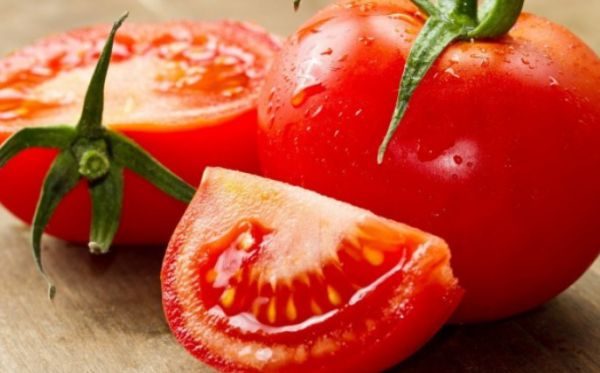

Saving tomato in paper is suitable for green and pink fruits
Before laying, each fruit must be wrapped in paper and folded loosely so as not to damage the neighboring specimens. The temperature regime should be maintained within +10 degrees.
Strong fruits are able to preserve their taste not only throughout the winter, but also until the March holidays.
Do not store ripe copies in paper.
The husk method
Storing tomatoes in onion skins allows you to save stocks until the New Year holidays, and sometimes until March 8. This method is optimal for pink or milky fruits. They should be flat, with no signs of damage or rot.
Boxes made of cardboard or wooden boxes are used as containers. The bottom is lined with wrapping paper. A large layer of onion husks is poured on top.
Each new row of tomatoes is sprinkled with husks. The top layer should also consist of onion skins. The ideal saving temperature is + 2 ... + 4 degrees. The container lid should not be tightly closed.
Drawers can be placed in the refrigerator, in the hallway, cool pantry.
Note
If you learned how to keep tomatoes fresh using boxes and paper, and decided to use this method, remember that periodically, about once a week, you need to sort out the fruits, pick up the ripe, overripe, damaged ones. Also, the fact is that already red tomatoes need to be separated from green ones, since unripe vegetables are not so saturated with folic acid, which contributes to the rapid reddening and ripening of the fruit. And we need to slow down this process. You know about the trick "If you want green tomatoes to ripen faster, be sure to put some red tomatoes to them." Therefore, red tomatoes from green ones need to be quickly removed.
It is also necessary to inspect tomatoes for rot so that one tomato does not infect the others.Change the paper, it becomes wet, and this is contraindicated for long-term storage. Keep an eye on the boxes and your tomatoes will be stored until spring.
If you have straw, then it is better to lay it on the bottom of the box, it is advisable to periodically change it to a new, dry one as well. Straw generally helps housewives to preserve ripe, tasty vegetables until the New Year holidays, especially in the question of how to keep tomatoes fresh. So stock up on it, get rid of disposable plastic bags. They collect moisture, spoil tomatoes.
There are all kinds of ways to keep tomatoes fresh. That is, put green or slightly ripe fruits in boiling water for 2 minutes, dry, wipe with alcohol, wrap in paper, fold with the roots up in a row, in two layers, sprinkle with sawdust and cover with straw. So in the spring, before the start of the season, you will be eating delicious aromatic tomatoes.
Storage of workpieces
There are many options for harvesting fresh tomatoes.
The shelf life depends on how the tomatoes are prepared.... It is advisable to use several storage methods at once. This will make it possible to use the product for a longer period of time.
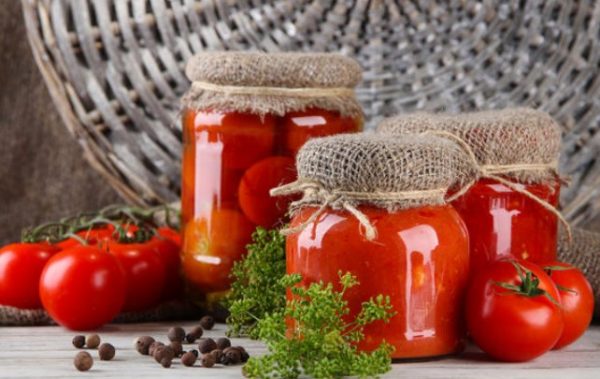

The shelf life depends on how the tomatoes are prepared.
Each container must contain information about the date of production of the workpiece.
Shelf life of various types of workpieces:
| Blank type | Duration of savings(in months) |
| Canned (under iron lids) | Up to 24 |
| Dried | 4-8 |
| Sun-dried tomatoes | 4-8 |
| Whole frozen | 6-8 |
| Frozen in pieces | 6-8 |
| Vinegar-free sauce | 3-4 days |
| Sterilized sauce | Up to 12 |
| Ketchup | Up to 12 |
| The juice | Up to 12 |
| Fermented in a barrel | 8 |
| Tomato oil in the freezer | 6 |
| Tomato oil in the refrigerator | Up to 2 weeks |
| Adjika | Until 6 |
| Jam | Until 6 |
Secrets of tomato blanks
To make fresh tomato preparations tasty and extend their shelf life, you need to adhere to simple recommendations:
- The solution for pickling red fruits should be more concentrated (7%) than for green and brown vegetables.
- Fleshy tomatoes are great for cooking adjika, pasta. It is not recommended to make juice from them.
- Thin-skinned vegetables are not suitable for pickling due to the loose peel, which will lose its elasticity by winter and will soften.
- Pickled tomatoes keep well at room temperature. It is important to avoid direct sunlight on stocks.
- The freezer is not the best place to store sun-dried tomatoes as it will discolor.
- Tomato juice will taste especially good if overripe fruits have been used to make the drink.
- Juice, poured into molds, is stored in the freezer for several months. The beverage sterilized in cans can retain its taste for up to 3 years.
- Dried fruits are stored in linen bags, in glass containers using refined oil.
- For storing sun-dried tomatoes, cotton bags are used, containers in which olive oil is pre-poured.
Prerequisites for keeping a vegetable fresh
There are some rules for storing fresh tomatoes. The requirements must be followed without fail, it will depend on how long they remain fresh and edible.
Storage temperature
The storage temperature depends on the degree of ripeness of the fruit. Traditionally, the following requirements are imposed:
- ripe - 0-2 degrees;
- white - 8-10 degrees;
- green - 12-14 degrees;
- brown - 4-6 degrees.
Failure to comply with the conditions can lead to rapid damage to the fruit. Also, do not allow temperature swings.
Other
An equally important factor is humidity, it should be 80%. It is these conditions that are considered optimal for tomatoes. A smaller indicator can provoke drying of the tomato peel, the appearance of rot.
In addition, the vegetable culture should be away from the sun's rays, light has an extremely negative effect on the fruits.
Storage at low temperatures
Tomatoes are suitable for freezer storage. To ensure their long-term preservation, it is important to carefully select the tomatoes. They should not show signs of rot, mechanical damage.


Tomatoes are freezer-safe
It is preferable to choose vegetables of medium size, with a loose skin and firm flesh. Before placing in the freezer, each fruit must be thoroughly washed and wiped dry with a paper towel.
You can freeze both whole tomatoes and chopped ones.
Whole fruits
The advantage of this procurement method is a longer saving period. Freezing does not affect the taste of the fruit in any way. They are suitable for consumption for 12 months.
Tomatoes without signs of rotting and damage are thoroughly washed, wiped dry with napkins and laid out in one layer on a stand. Vegetables should not be stacked on top of each other.
In this case, they will not be wrinkled. The tray is placed in the freezer at the maximum freezing setting. After completely freezing the fruits, they are placed in a special freezing bag.
Chopped tomatoes
This method is time consuming compared to saving the whole fruit. However, the advantage is that the tomatoes can be added as a dressing without slicing or thawing.
Before starting the product, there is no need to choose perfectly whole tomatoes and get rid of the peel. The fruits are washed under water, cut into small slices.
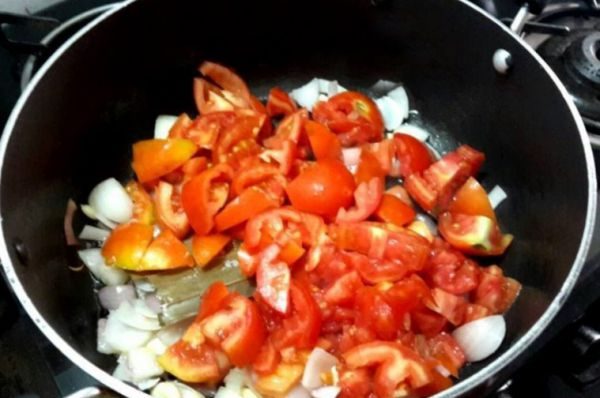

Chopped tomatoes
In the same way, you need to prepare bell peppers and herbs. The products are ground in a meat grinder and mixed thoroughly. There is no need to salt the resulting mass.
The mixture is placed in silicone baking tins of any shape. Chopped tomatoes are sent to the freezer.
After complete freezing, the product is removed from the molds and placed in special bags for storing vegetables in the freezer. The resulting tablets can be added to borscht or as a salad dressing without defrosting.
We close the tomatoes as fresh for the winter in jars. How to do it
Usually, in order to keep vegetables fresh for the winter, we strive for them. This is one of the options for keeping them that way. But, there are other recipes that have nothing to do with freezing. Exactly, I found such a recipe today. As they say, applying it, your tomatoes will be as fresh almost to the point. If this is the case, it would be very nice to remember the taste of your tomatoes at the New Year's table, which we are so tired of in the fall. But in winter, you can't say so about them.
What's interesting is that to keep tomatoes for so long without freezing, you don't even need salt! She is completely absent in this recipe. There is also no vinegar with water. That is, we will not ferment them, but we will keep them fresh. At the same time, they will remain not only fresh, but also elastic. These are the tomatoes that we usually pluck from the garden. In winter, of course, it will be a kind of surprise if you treat them to guests, for example, on the same New Year.
What do you need and how to cook?
So, with what we DO NOT need, we have already figured out, now we will still talk about what is needed. And we need, of course, ourselves. For such long-term storage, you need to choose dense fruits, as they say, fleshy, and it is best to pick them up small in size. Also, make sure that these tomatoes are not dented or even slightly damaged.
How to save rotting tomatoes
Compliance with all the rules for storing tomatoes does not guarantee that the product will not start to deteriorate.
Sharp changes in temperature and humidity contribute to the appearance of brown spots on vegetables. To save the fruits, they are placed in water heated to +60 degrees.
The optimal residence time for tomatoes in hot water is 5 minutes. Tomatoes need to be rubbed and dried well. If the fruits are overripe, they can become soft, and cracks appear on their skin.
These areas of damage can be sprinkled with coarse rock salt to avoid further mold growth. If the product continues to deteriorate, then the tomatoes are used for culinary purposes.
Soft tomatoes are suitable for the following dishes:
- Bolognese sauce for pasta.
- Meatball sauce.
- Dressing in borscht.
- Ketchup.
- Lecho.
- Tomato oil.
- Dressing for salads.
Tomato processing
If you have a rich crop of tomatoes and don't want to keep them all fresh, you can process them.
Tomatoes are usually processed in the following ways:
Vegetables processed in such a way do not spoil much longer and do not require special storage conditions.
The most common type of vegetable processing is canning. The storage of such tomatoes can be up to one year if the package has been sealed. Otherwise, the term is reduced to six months.
Sun-dried tomatoes should be kept in cloth bags in a dry place. The main enemy of tomatoes prepared in this way is moisture, insects and spices, whose smell can ruin the flavor of the vegetable.
Sun-dried tomatoes can be poured over with oil, placed in a hermetically sealed container and refrigerated.
Storing dried tomatoes is not much different from dried tomatoes. For this, linen bags or cans of oil are suitable. If you keep dried tomatoes in boxes, it is best to place them in a dark place with a temperature not exceeding 10 ° C or in a refrigerator.
Varietal features
An important point for conservation is the choice of the variety. It is a misconception that any variety can be stored for a long time. Before setting a goal to feast on your own tomatoes for the New Year holidays, sort out the varietal assortment, otherwise you will be defeated.
An event is doomed to fail if:
- when choosing a variety, you did not pay attention to such an indicator as "keeping quality";
- a re-grading went on the beds;
- during harvest, tomatoes of different varieties were mixed.
If you do not know what kind of fruit you want to keep, it is better not to do this, because a tomato that ripens for a long time is not tasty. Even if it is dense and seemingly beautiful, it has an unpleasant smell, taste and a disgusting aftertaste.
It is a completely different matter when tomatoes, put for ripening, ripen quickly, and then are processed into stunning preparations that will decorate any festive table and prove to everyone that you are an excellent hostess. [flat_ab>
A whole army of breeders is working on creating such tomatoes that lie longer and over time only become tastier, sweeter, more aromatic.
Myths and reality
If you wander around the Internet, you can read a lot, but over each line it is worth thinking about:
- "For ripening tomatoes must be covered with a red cloth." This is probably already outright quackery, although if you want to have your own opinion on this, then try it. It is desirable, of course, to observe the purity of the experiment and cover one box with a red rag, and the other, for example, with a green one. And please share your research results in the comments.
- Mustard powder does not help ripening either. If the tomatoes have turned black, he will also not save.
But the fact that a ripe or starting to rot apple is placed on green tomatoes, and unripe tomatoes ripen faster - the true truth.
Do you know how ripe fruit smells? That's right - delicious. They smell like ethylene with aromatic substances. The more ripe the fruit, the more gas it emits and contributes to the reddening of its neighbors.
At the beginning of the last century (1936), a work on the effect of ethanol (medical alcohol) on stored tomatoes was published at the Peterhof Biological Institute.So, with the introduction of 0.2 ml of vodka into the pulp of a tomato, at first the injection site began to blush, and then the fruit itself, moreover, evenly. This was not reflected in the taste.
The ripening of "drunk" tomatoes takes place 10-12 days earlier than "sober" ones. An interesting fact is that "drunk" tomatoes give seeds with excellent shoots.
Harvesting and sorting
Whatever goal you pursue, the event will be successful if:
- tomatoes are harvested in a timely manner, without waiting for the time when frost will cover the fruits or they will undergo frost treatment;
- vegetables collected are benign, not blackened from the phytophthora fungus, not damaged (nailed, crushed);
- a dry day is selected for harvest, not a wet morning.
Since when harvesting there is no time to look at the degree of maturity and beauty of the circles, then when laying the house for storage, you need to pay attention to these parameters.
- green tomatoes;
- beginners to brown;
- brown;
- red.
They need to be sorted and the faster the better. Let the reddened ripe ones go into immediate processing, there are many methods for this:
- canning;
- fermentation;
- drying;
- freezing;
- processing into tomato products.
Brown tomatoes will be the first to be processed when they turn red.

